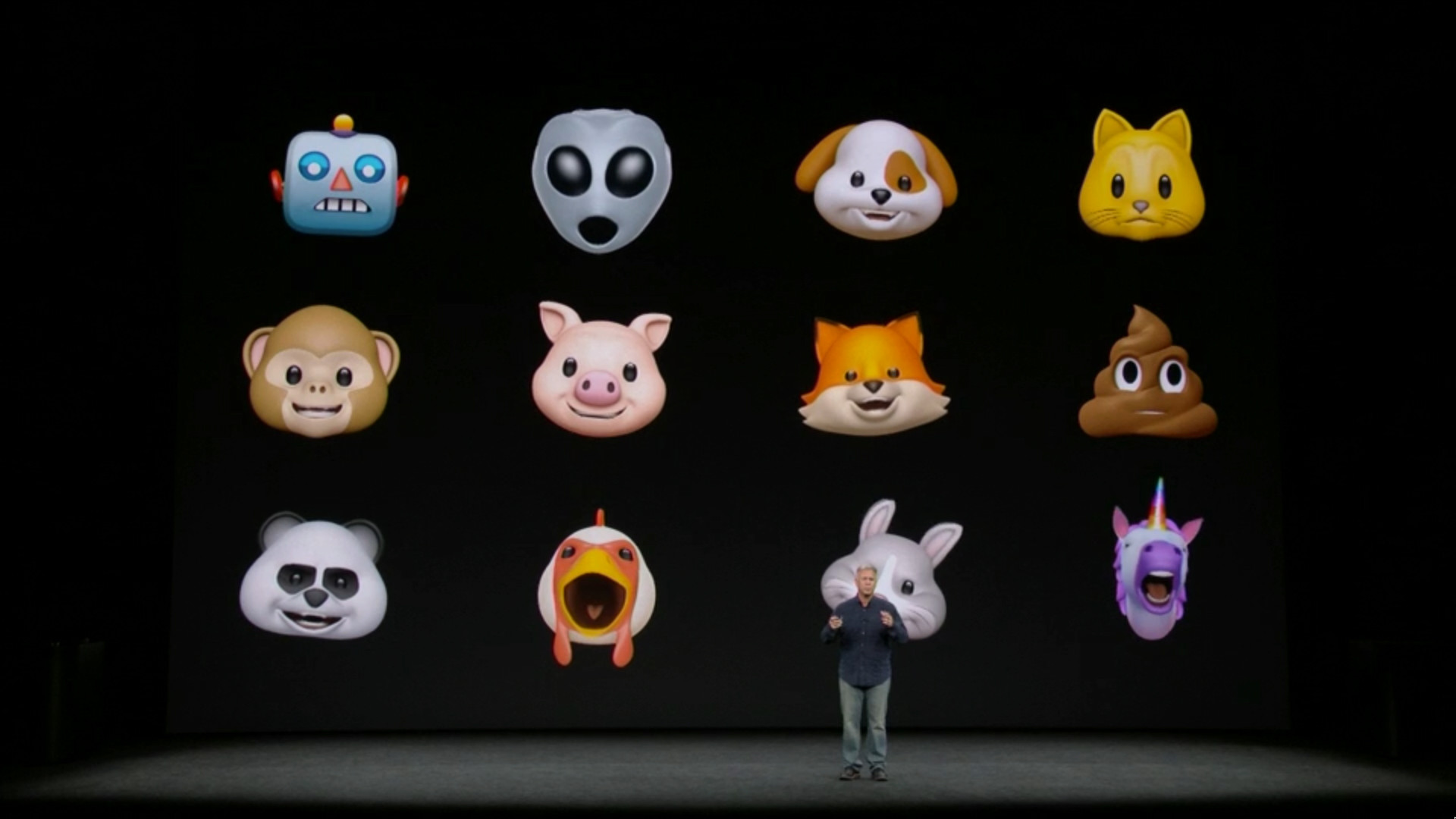“One More Thing…” – A critical approach to the Apple 2017 Keynote Presentation
But there is “One more thing.” There it was again. These famous words, first introduced by Steve Jobs, where presented at the 2017 Keynote Presentation. It was the first presentation in the official Steve Jobs Theater and the “One more thing” of this year is the new IPhone X, but how should we approach these popular Keynotes?

Chief Executive Officer of Apple Tim Cook introduced the IPhone as follows:
Over the last ten years we reimaged and invented numerous technologies. We changed the way people communicate with features like IMessage and Facetime, with Touch-id and our wallets with Apple Pay. (…) But now we create devices that are far more intelligent. We want to set the path for technology for the next decade! An IPhone X, the most intelligent IPhone we have ever made. (…) We hope that you love what we introduced today!
Apple dedicates entire events to introduce and illustrate the exclusive new features of their products. They demonstrate how the new products should be used according to Apple. In this blog post I will critically look at these presentations and the focus will be on the new invention animoji’s. It is interesting to see how Apple present this new feature and how they attempt to set this technology as the new norm. It is related to the following media theories.
First the presentation is a fitting example for Agre’s theory of the capture model, which will provide an answer to the question why Apple put so much effort in these events. Second and related to the former is Langlois and Elmer’s notion of double articulations, which again stresses the interest of these events for Apple.
Animoji as a new grammar of action
Before going into theory, first it is important to know what an Animoji is. An Animoji is an animated emoji. The new facial recognition technology in the IPhone X affords users to animate their send emoji’s with their own facial expression and voice. Senior Vice President of Apple Craig Federighi explained that the goal of Animoji is to “breathe our own personality” into our favorite emoji’s (TechCrunch).
So what than is an emoji, the predecessor of the Animoji. Stark and Crawford studied emoji’s and stated “emoji can act as an emotional coping strategy and a novel form of creative expression. (…) Emoji create new avenues for digital feeling” (1). Also Boia emphasizes the important role of emoji: “emoticons offer a straightforward means of expressing sentiments, which words do not duplicate” (6). The new Animoji is very different than the former, because it is no longer “an expression that words do not duplicate”. It asks for a totally different use where words do matter.
Here is where the theory of Agre becomes interesting. Sending an Animoji asks for a new ‘grammar of action’, because the way people can use this new way of sending text is different than before. The grammar of action is the way humans interact with technology, the way human activities have been structured. “The grammar specifies a set of unitary actions” (Agre 746).
Each technology asks for a different grammar of action and it is important for companies to implement this in their technology as well as possible. Why it is so important will be further explained later, but first we will look at how companies implement these technologies. According to Agre, the implementation of a new grammar of action goes in five steps: Analysis, articulation, imposition, instrumentation and elaboration (746).
The third step, imposition, is interesting when trying to understand these Apple events. Apple first implements (the fourth step) their new technologies. The new IPhone X is already produced, so they do not exactly follow the five steps the way Agre wrote them done. But they still need to promote the new technology properly. But the event is not only for promotion. The imposition step is also used to steer the user in a certain way. Certain features of the new phone are accentuated.
Stanfill did an interesting research on this subject. She looked at the ‘discursive environments’ of digital interfaces. She showed in her study how companies try to build in a normative technically possible use in technology through productive constraint (1062). One can argue that Apple tries to do this with accentuating how a certain feature can be used.
Tracking data and double articulations
So than is the question why they put al these effort in explaining and promoting special features like Animoji’s? Why is it important to build in a discursive environment? For this question to be answered the last step of Agre’s grammar of actions is important:
Elaboration. The captured activity records (…) can now be stored, inspected, audited, merged with other records, subjected to statistical analysis, employed as the basis of Pareto optimization, and so forth.
(Agre 747)
The captured activity records can be seen as the data generated by the activities of the user. The Animoji is of course an interesting new feature for the user, but the data that follows is also very interesting for Apple. A simple emoji doesn’t generate a lot of data, but a self created, animated and speaking emoji is far more interesting. A well-designed grammar of action leads to data that can be tracked.
Agre calls this the capture model. The capture model is about reorganizing our society. First the world must be ordered, so it can be managed. It is like trying to make a map of a territory. This map is always reduced. It is about representing and capturing the essence of the world. In our society everything is about capturing this essence, so the world can be improved with technology. The result is a manageable environment with tracking possibilities (Agre 744).
This is also interesting when looking at what Langlois and Elmer call ‘double articulations’ (5). They say that in digital objects economic, technological and social logics are intertwined. Communication that takes place on one level also creates articulations at another level. There is always a second (hidden) layer. In discussing social media platforms they argue: “they do not simply use communication as a springboard to promote special interests – they use communication to tap into everyday life in order to try and refashion it from the inside” (4). It is like mapping the territory so it can be improved.
The double articulations show the importance of the last step of Agre’s grammar of actions. Stalder’s notion of the front-end and the back-end is also useful to understand the hidden layers. Stalder argues: “[The front-end] is decentralized, ad hoc, cheap, easy to use, community oriented, and transparent. [The back-end] is centralized, based on long-term planning, very expensive, difficult to run, corporate, and opaque” (248). The Apple events are very transparent about the possibilities with new features for the user. This is the right way to use this product! On the other hand, the underlying data tracking is opaque and not mentioned at all.
https://www.youtube.com/watch?v=MXOywGjYuIk
From South Park episode 1 season 18 – Go Fund Yourself
F*ck you, f*ck you!”
This vulgar quote is from South Park character Eric Cartmen when he is doing his version of an Apple Keynote presentation. South Parks view on these Apple events is very clear: the keynotes are over the top, not important and do not bring any interesting new information. Cartmen tells the audience that – in their company – they have moved the couch from the left side of their office to the right side. “But we didn’t stop their… we also added a new rug that goes better with our office drapes”.
Of course this view is not new. Allot of people think that new IPhones are just the same as the previous ones and that the new technologies are heavily overrated. But even if the new features are not that exiting, the way Apple announces them is very interesting. They want to “set the path for the next decade”, so it is not just a simple presentation. Apple steers us in a certain direction. A normative grammar of action that generate interesting data for these companies.
Like Langlois and Elmer argue: “Understanding that digital objects are multifaceted, that they can hide as much as they can reveal, opens the door for a new critical approach” (13). This critical approach is important and that means that the way these digital objects are presented to us needs to be critical analysed.
References
Agre, Philip E 1994. Surveillance and Capture: Two Models of Privacy. The Information Society 10(2): 740-760.
Boia, Marina, et al. “A:) is worth a thousand words: How people attach sentiment to emoticons and words in tweets.” Social computing (socialcom), 2013 international conference on. IEEE, 2013.
Ha, Anthony. “The Iphone X will include Animoji, emojis animated based on your facial expressions.” TechCrunch. 12 September 2017. 20 September 2017. < https://techcrunch.com/2017/09/12/iphone-x-animoji/?ncid=rss>
Langlois, Ganaele, and Greg Elmer. “The Research Politics of Social Media Platforms.” Culture Machine 14 (2013): 1–17.
Spence, Ewan. “Iphone X is everything wrong with Tim Cook’s Apple”. Forbes. 23 september 2017. 24 september 2017.
Stalder, F. “Between Democracy and Spectacle: The Front-End and Back-End of the Social Web.” The Social Media Reader. Ed. M. Mandiberg. New York: New York University Press, 2012. 242–256.
Stanfill, Mel. 2015. The Interface as Discourse: the Production of Norms Through Web Design. New Media & Society 17(7): 1059–1074.
Stark, Luke, and Kate Crawford. “The conservatism of emoji: Work, affect, and communication.” Social Media+ Society 1.2 (2015).
Warren, Tom. “Apple announces Animoji, animated emoji for Iphone X.” TheVerge. 12 September 2017. 20 September 2017.
